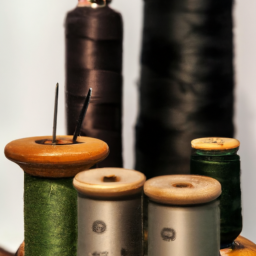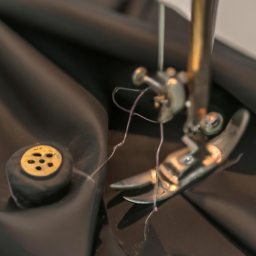
History of Serger Sewing Machine

When it comes to sewing machines, one cannot overlook the significant impact that serger sewing machines have had on the textile industry. A serger, also known as an overlocking machine, is a specialized type of sewing machine that creates professionally finished seams and edges. Let’s take a journey through time to explore the fascinating history of the serger sewing machine.
The Beginning: 19th Century
The foundation of the serger sewing machine dates back to the 19th century when the industrial revolution was in full swing. In 1841, a Frenchman named Jules Gaillard patented the concept of an overlocking stitch mechanism, which became the blueprint for modern sergers. Despite this inventive breakthrough, it took several decades for the serger machine to gain popularity and recognition.
Industrial Revolution: Late 19th to Early 20th Century
In the late 19th and early 20th century, the sewing industry experienced a tremendous boom. This period saw numerous advancements in sewing machine technology, including the development of specialized machines like the serger. Companies like Singer, Pegasus, and Wilcox & Gibbs played a pivotal role in refining and commercializing sergers.
Introduction to Home Sewing: Mid-20th Century
As home sewing became increasingly popular in the mid-20th century, manufacturers recognized the need for smaller, more affordable serger sewing machines. Companies like Bernina, Brother, and Janome started producing sergers for domestic use, enabling amateur seamstresses to achieve professional finishes at home.
Technological Advancements: Late 20th Century
The late 20th century witnessed significant technological advancements in serger sewing machines. Computerized sergers with programmable stitch settings, automatic threading systems, and advanced cutting mechanisms emerged. These innovations made sergers even more user-friendly, efficient, and versatile.
Modern Serger Sewing Machines
Today, serger sewing machines have become an indispensable tool for professionals and hobbyists alike. With features like differential feed, multiple thread capabilities, and a wide range of stitch options, modern sergers offer unparalleled versatility. They are used not only in fashion and garment manufacturing industries but also by crafters, quilters, and home décor enthusiasts.
The Future of Serger Sewing Machines
As technology continues to advance, the future of serger sewing machines looks promising. We can expect further enhancements in automation, precision, and connectivity. Integration with smart devices, artificial intelligence-powered features, and eco-friendly designs might revolutionize the way we sew with sergers.
In conclusion, the history of the serger sewing machine highlights the continuous improvement and evolution of sewing technology. From Jules Gaillard’s patent in the 19th century to the high-tech sergers of today, these machines have revolutionized the way we achieve professional finishes in our sewing projects.




